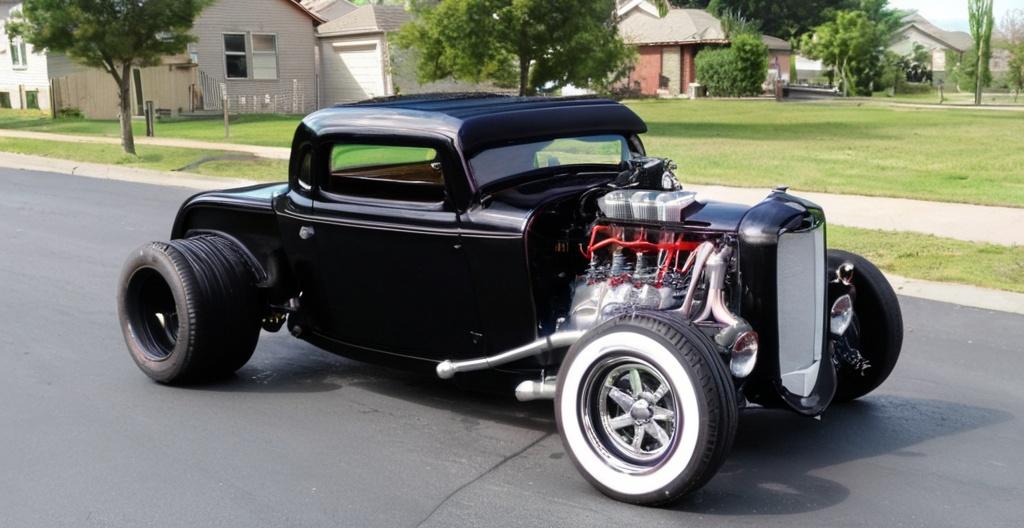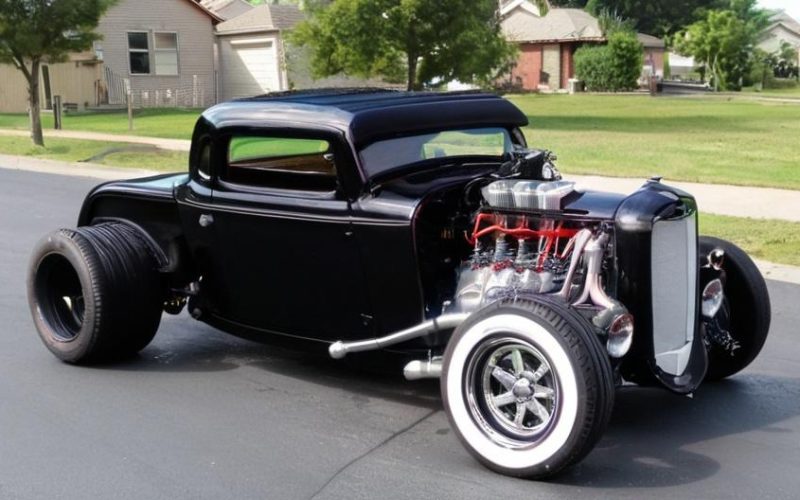Key Take Aways About How Hot Rodding Evolved into Street Rodding
- Hot rodding began in the 1930s with modifications for speed.
- Street rodding emerged post-WWII, prioritizing performance, style, and comfort.
- By the 1950s, car clubs fostered community and showcased polished rides.
- Street rodding influenced modern car culture with trends like resto-modding.
- The hobby is also viewed as a financial investment, with high restoration costs.
- Street rodding communities thrive on shared passion and camaraderie, with events connecting enthusiasts worldwide.
- The culture emphasizes personal expression, innovation, and historical homage.

The Birth of Hot Rodding
Hot rodding, born from the dusty tracks of the 1930s, was a time when speed was king, and the rules? Well, there weren’t many. Folks took old, clunky cars, often Ford Model Ts or As, and stripped ’em down to make ’em lighter and faster. With an extra squeeze or two on the throttle, drivers felt the wind mess up their hair and everyone was happy to watch.
Back then, even if you had a few screws loose, you could be a mechanic. Tinkerers, as some called ’em, spent long nights in musty garages, figuring out how to make these machines roar. The term “hot rod” came from the practice of installing a “hot” or modified camshaft, known as a “rod,” hence the name. It was all about one-upping the fellow next door, trying to make their junkyard find the fastest one around.
Hot Rods Hit the Streets
Street rodding evolved from this passion for speed. As World War II ended and soldiers came home with savings and mechanical skills from their service, they looked for new thrills and freedom. Cars were a natural outlet. But, unlike earlier days, the idea wasn’t just about racing on dusty tracks or dry lakes. It was about cruising down the streets with a car that worked as an everyday vehicle—newfangled, shiny, and loud fashion statements.
By the 1950s, the culture had shifted to a more polished scene. Car clubs sprang up, bringing together people with a mutual appreciation for horsepower and sleek designs. These clubs weren’t just about the cars, but also about community. Folks gathered for car shows, swapped parts and stories, and spent weekends working on their rides together.
The Change to Street Rodding
Street rodding marked a shift from raw speed to a blend of performance, comfort, and style. With this change, enthusiasts began to emphasize aesthetics nearly as much as they did horsepower. Chrome accents, colorful paint jobs, and plush interiors became the rage. Unlike hot rodding, where aesthetics were secondary, street rods were often built to be works of art on wheels.
Owners sought to balance between originality and modification. The evolution continued with the National Street Rod Association being formed in 1970, which played a significant role in shaping the culture by hosting national events where folks could showcase their prized machines.
Influence on Modern Car Culture
Street rodding also left its mark on modern car culture, influencing everything from how we modify cars to the cars we choose to celebrate. The notion of customizing something already iconic has persisted, morphing into modern tuning and restoration projects. The culture bustled with activities like swap meets, where people barter parts like it’s going out of style, and car shows that feel more like a step back in time.
This movement created a foundation for modern-day modification trends, including the concept of resto-modding—where classic cars are restored but with modern parts to improve performance and reliability. It’s about mixing the old with the new, a nod to the past while embracing the present.
The Financial Side of Street Rodding
Street rodding comes with its own set of financial considerations. For many, it’s not just a hobby but an investment. A carefully restored or well-maintained street rod can fetch a pretty penny at auctions. However, it’s not just about the potential return on investment. The joy of restoring a piece of history or modifying a car to personal taste often outweighs the costs.
Restoration and modification can be a costly affair. Parts are often rare, and finding the right one can mean endless hours scouring swap meets or the internet. Then there’s the labor if you’re not handy with a wrench yourself. Shops specializing in these vintage beauties charge a premium, but for many, it’s an investment in passion as much as it is in dollars.
Street Rodding Communities
Street rodding isn’t just about the cars; it’s about the camaraderie that fuels the culture. Communities of like-minded individuals share not just tips and tricks but stories and a shared passion. Whether it’s through online forums or local car clubs, the exchange of knowledge and experience builds a rich tapestry that connects generations.
Events, from small local meet-ups to national gatherings, serve as the lifeblood of these communities. They provide a platform for enthusiasts to showcase their rides and ideas, inspiring new projects and friendships. It’s not uncommon for folks to drive hundreds of miles, just to be part of the action, shake hands with a fellow enthusiast, and admire the fruit of countless hours spent in the garage.
Final Gear
Street rodding, with its roots deeply embedded in the idea of personal expression and community, has transcended mere modification. It’s become a lifestyle for its aficionados, a testament to the history of automotive innovation, and a homage to the enduring spirit of customization that persists today. While the cars are the stars of the show, the connections made and the stories shared fuel the scene, driving it forward for generations to come.
